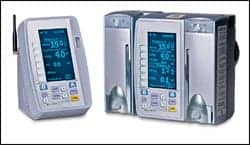Today?s computer simulation software can help you determine whether or not adding imaging equipment to your ED is a wise move.

Kristyna Culp, Managing Principal, FreemanWhite
Should a hospital add imaging equipment to its emergency department? Easy question. Most hospital administrators can answer immediately: Yes. And they are probably right. Imaging offers tremendous benefits to an ED. It slashes travel time for patients, shortening the time the patient is out of the ED. It reduces footsteps for staff, and fewer footsteps reduce fatigue and boost efficiency. Taken together, these benefits can cut the average length of stay (LOS) for patients visiting the ED. A shorter LOS translates into additional time that can be used to serve more patients, and that means more income for the hospital.
Unfortunately, three difficult questions require answers before a hospital administrator can move forward with such an undertaking.
First: Is the ED currently operating at peak efficiency? A computer model that simulates ED operations will reveal inefficiencies that should be outlined, if not fixed, before any major decision about imaging is made.
Second question: Can the hospital afford the financial cost that comes with constructing the imaging suite and buying and installing a number of million dollar plus pieces of equipment, to create a redundant set of imaging services? Although many hospitals answer in the affirmative when they decide to create outpatient services within the hospital, an ED requires imaging 24 hours a day, 7 days a week, 365 days a year. Not closing at the end of the business day and on weekends requires more staff and creates the need for more frequent maintenance.
Third: Can the emergency department afford to turn over the space required to house the imaging equipment, especially considering CT and MRI space needs and support?
Here are some insights for health care leaders seeking to answer such questions.
Modeling Efficiency

At Englewood Hospital & Medical Center Emergency Care Center (Englewood, NJ), a fully staffed imaging suite in the center of the ED includes a dedicated CT and other diagnostic equipment.
Correcting inefficiencies first may actually cut costs and allow more time to treat more ED patients, which in turn will help to pay for an imaging initiative. In addition, simulating the effect of adding imaging capability to an inefficient department can produce skewed results.
Today’s computer simulation software can provide robust data-driven models of operations in virtually any hospital department, including the ED. The models show, with great accuracy, how small operational changes can produce dramatically different patient improvement outcomes and financial results. At the same time, simulation models can show how large changes can, under certain circumstances, have small effects.
Building a model begins with importing data from AutoCADplans. Models also require data about physician, nursing, and support staffing; insured and uninsured patient populations; and performance statistics such as patient LOS, numbers of patients leaving without being seen, and overall patient processes. Other data may include performance statistics such as ESI acuity scoring data, patient time of arrival, and utilization statistics such as capacity utilization.
A good model can guide the way to a more efficient ED. It can evaluate staffing, patient management, support functions, and much more. It can help administrators make an informed decision about what processes to target for improvement, and how to prioritize the improvement initiatives.
Suppose an ED has an average LOS of 5 hours and long wait times, and the exam rooms are at capacity most of the time. Administrators can use the simulation model to determine how shortening walking distances, adding more treatment rooms, shifting staff to align with patient arrivals, and/or altering processes might lower LOS.

That is the point at which administrators may add imaging to the simulation. This way, seeing an “in a perfect world” scenario may provide the impetus needed to correct inefficiencies prior to adding an imaging unit—if administrators can see that all the changes together would make a positive impact.
While it is tempting to think that long and solid administrative experience can stand in for a computer simulation, it can be risky business. Decisions made on the basis of intuition or historical references, without a simulation model, can backfire.
For example, it is not unusual to assume that a crowded ED requires more treatment spaces. Sometimes that is true. Sometimes, however, treatment rooms added in reaction to rising patient volumes and LOS simply result in more patients waiting in treatment rooms. A model can show whether a reconfigured process floor plan with more efficient triage/intake processes can do what more treatment rooms cannot do—without a construction budget and additional staff. Again, adding an imaging capability to the more streamlined process shows its benefit in a truer light.
The “what if” capability of today’s computer simulation models can quantify any process or design change imaginable.
Building the Case for Imaging
The more patients seen in a hospital ED, the stronger the case for imaging becomes. An ED that serves more than 60,000 patients per year will definitely see a positive benefit from imaging. This is especially true nowadays, when digital capabilities require fewer rooms to see the same number of patients.
For such an ED, a simulation model could determine how much imaging equipment and staff are needed. Would one or two stations for CT, MRI, ultrasound, and x-ray suffice? Again, a model can project an optimum combination for an existing population, describe the effect on LOS, and evaluate the future results based on an increased ability to handle larger patient populations.
For smaller EDs that experience 100 to 150 patients per day, a simulation will indicate either a marginal or a significant benefit from providing in-department imaging support. EDs of that size can make it difficult to determine which way to go.
The benefit of in-ED imaging is very dependent on the volume of imaging studies performed. So a smaller volume ED may benefit greatly from an imaging suite, if the imaging volume can support the equipment. A recent study in Radiology showed that CT use in the ED has increased 500% from 1995 to 2007, and the trend is expected to continue, along with an increase in ED MRI use.
A simulation model can also conduct payback studies by comparing the cost of installing an imaging capability with the likely change in income produced by declining LOS and numbers of patients who leave without being seen.
As for estimating costs, imaging equipment is expensive. Simulation studies can factor in different equipment costs, the costs per square foot for construction, as well as the payroll and benefit costs for staffing the new facilities.
Such simulation models can help answer several questions: Will reductions in LOS and increases in the volume of patients served generate enough income to pay off the investment in a reasonable period of time and to allow a return on investment commensurate with the money invested in the project? How does changing the size of the investment in imaging equipment alter the payback and return on investment numbers?
The Space Factor
Chances are that a computer model will point the way to increased ED efficiency through operational changes and the addition of imaging facilities.
But where will the equipment go? EDs are crowded places. Some EDs can absorb space around the perimeter, but then again, imaging equipment should be centrally located to serve both lower acuity and high acuity patients. In other words, they should be convenient, if not immediately adjacent, to the resuscitation rooms for staff ease of access.
Imaging consolidation is also important to support radiology technologists working between all modalities. On the other hand, the imaging space need not accommodate ultrasound equipment—bedside ultrasound testing not needing a separate room since all of the ED treatment rooms are private and supportive of bedside ultrasound testing.
Shrinking administrative office space, or streamlining operations so that fewer examination rooms suffice, can free space up. In some cases, square footage in the waiting room might be dispensable.
Sometimes, however, finding sufficient space for an imaging suite might require a complete ED renovation—which, when combined with the cost of building and equipping an imaging suite, may make the project too expensive to pursue.
In short, a simulation based on good data can answer the key questions asked above: Are the ED operations efficient? Will imaging equipment produce a return on investment? Can the hospital afford the financial investment—if not now, then perhaps after streamlining ED operations? Can the ED afford to spend the space or find extra space somehow?
When administrators can answer yes to those four questions, dedicated ED imaging can become a reality.
Kristyna Culp is Managing Principal with FreemanWhite, Charlotte, NC. E-mail:

Exceptions
There are two exceptions to the general idea that emergency departments should install imaging suites. First, some hospitals, no matter what the benefits, just won’t have the money or space and won’t earn a large enough payback to justify the expenditure. In those cases, hospital imaging should be immediately adjacent to the ED to gain many of the improvement initiatives. Because existing equipment would be continually in use, the hospital could consider the equipment to be not redundant, but rather an extension of services offered. The imaging would provide both emergent patient care and as-needed inpatient services.
Another option is today’s portable imaging equipment, which offers high quality for the price. If the ED physicians are satisfied with the quality of the exams, portable equipment might answer the call. However, this still requires radiology technologist time, and often two individuals are needed to complete portable studies—where one technologist could do the same study in an imaging room.
Some hospital administrators may find that their facilities have a third, fortunate option that will require very little cash and space to add imaging. Imaging departments, like EDs, usually reside on a hospital’s first floor. If the two departments happen to be adjacent, a short connecting corridor and dedicated entrance from the ED to the imaging department will suffice. New equipment isn’t necessary, and neither are additions to the payroll.
—K. Culp




